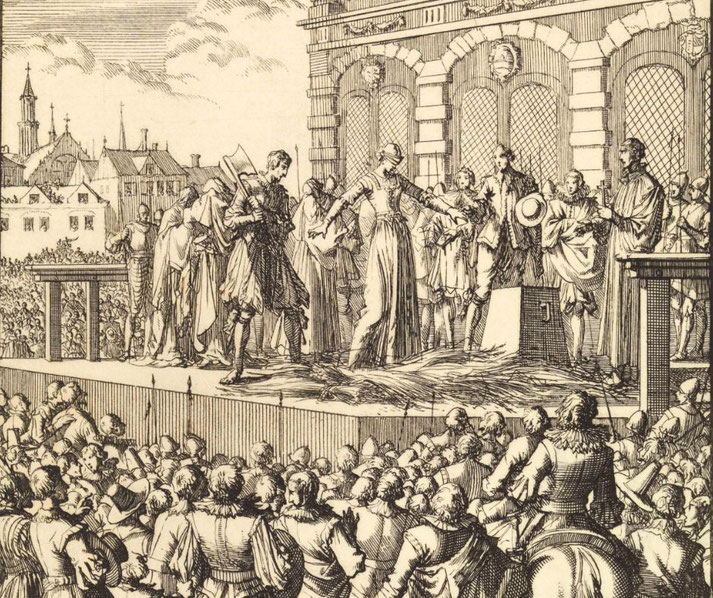Lady Jane Grey: The tragic tale of a reluctant queen who only ruled for nine days

The Tudor period of English history is full of incredible stories of life, death and struggles for power. However, few figures are as enigmatic and tragic as Lady Jane Grey, the "Nine-Day Queen".
A young, highly educated woman thrust into the storms of Tudor politics, she ascended to the throne only to be deposed in less than a fortnight.
But what led to her brief reign?
Why was she chosen as Edward VI's successor, bypassing the more obvious candidates like Mary and Elizabeth?
And how did her reign, lasting a mere nine days, become a pivotal moment in the religious and political landscape of 16th-century England?
Jane's early life
Lady Jane Grey, born in October 1537, was the eldest daughter of Henry Grey, 3rd Marquess of Dorset, and Frances Brandon, the daughter of Henry VIII's sister Mary.
Jane was a highly intelligent and well-educated young woman, fluent in Latin, Greek, and Hebrew.
She was also a devout Protestant, which would later play a significant role in her life.
A pawn in a game of thrones
Jane's life took a dramatic turn when King Edward VI, the son of Henry VIII, fell seriously ill.
King Edward VI, the son of Henry VIII and Jane Seymour, was a devout Protestant.
As he lay dying from tuberculosis at the young age of 15, he was deeply concerned about the future of Protestantism in England.
His half-sister Mary, the daughter of Henry VIII and Catherine of Aragon, was a Catholic and next in line for the throne.
Fearing that Mary would undo his religious reforms and return England to Catholicism, Edward sought an alternative.
Edward and his advisors drafted a legal document known as the "Devise for the Succession", which bypassed both of his half-sisters, Mary and Elizabeth, in favor of the descendants of his father's sister, Mary Tudor, Queen of France.
Edward's first cousin once removed, Lady Jane Grey, was a devout Protestant and thus became his chosen successor.
The document was signed by Edward and supported by many of his advisors, although it was never ratified by Parliament.

Reasons Jane was chosen to take the crown
John Dudley, the Duke of Northumberland, was one of Edward VI's most trusted advisors.
He was also the father of Guildford Dudley, who was married to Lady Jane Grey.
Northumberland was a powerful figure in the English court and a fervent Protestant.
He played a crucial role in convincing Edward to name Jane as his successor, partly to maintain his own power and partly to ensure the continuation of Protestant rule.
However, many historians argue that his ambitions played a significant role in this decision.
The Grey family, particularly Jane's parents and her father-in-law, the Duke of Northumberland, saw the young, intelligent Jane as a means to ascend to the pinnacle of English power.
They were instrumental in orchestrating her marriage to Guildford Dudley and subsequently supporting her claim to the throne, although it's widely believed that Jane herself was reluctant to take on the role.
Lady Jane Grey was a committed Protestant, and her religious convictions made her a suitable alternative to the Catholic Mary in the eyes of Edward VI and his Protestant advisors.
At a time when religion was deeply intertwined with politics, Jane's faith was seen as a guarantee for the continuation of Edward's religious reforms.
Her tumultuous nine days as queen
Upon the death of King Edward VI on July 6, 1553, Lady Jane Grey was proclaimed queen four days later.
Jane was brought to the Tower of London, traditionally where monarchs resided before their coronation.
She was reportedly shocked and distressed when informed of her new status.
It's believed she accepted the crown out of a sense of duty and pressure from her family, particularly her parents and the Duke of Northumberland, John Dudley.
Mary was in East Anglia when she received news of her brother's death and Jane's proclamation as queen.
She quickly garnered significant support from local nobility and the general populace, who viewed her as the legitimate successor.
As Mary's support grew, it became clear that the Duke of Northumberland's plan to secure the throne for his daughter-in-law was faltering.
He led an army out of London to capture Mary but soon realized the depth of her support.
Many of his troops defected, and key allies began to abandon the cause of Queen Jane.
On July 19, just nine days after Jane's proclamation, Mary was declared queen in London.
Jane and her husband, Guildford Dudley, were declared traitors.

Jane's imprisonment and execution
Jane and her husband were imprisoned in the Tower of London. Initially, Mary intended to spare her young cousin's life.
However, an uprising led by Thomas Wyatt the Younger aimed at putting Jane back on the throne forced Mary's hand.
Seeing Jane as a continuing threat, Mary ordered her execution. On February 12, 1554, at just 16 years old, Lady Jane Grey was beheaded.
Lady Jane Grey is often viewed as a tragic figure; a young, intelligent woman manipulated by the ambitions of her family and the religious strife of her time.
What do you need help with?
Download ready-to-use digital learning resources
Copyright © History Skills 2014-2025.
Contact via email
With the exception of links to external sites, some historical sources and extracts from specific publications, all content on this website is copyrighted by History Skills. This content may not be copied, republished or redistributed without written permission from the website creator. Please use the Contact page to obtain relevant permission.





